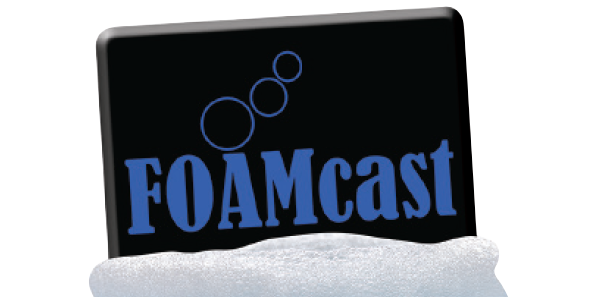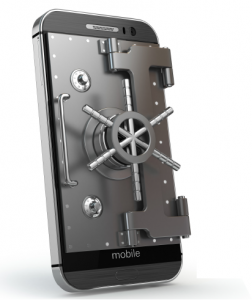
Over the last three years, FOAMcast listeners have come to expect our podcast to serve as a bridge between the cutting-edge progressive emergency medicine practice favored by free open-access medical education (#FOAMed) blogs and podcasts and the real world of everyday medicine and core content that we all practice most of the time. To that end, our four most recent shows are excellent examples of that bridge. Check them out on iTunes or at FOAMcast.org.
Explore This Issue
ACEP Now: Vol 36 – No 08 – August 2017Here’s a quick rundown.
Text Messages
First up, text messaging during clinical care. I text. You text. Your kids text. Your brother and your mother text. Your patients? They definitely text, often during the physician encounter. Let’s face it: We all text. In fact, 91 percent of all Americans have a cellular phone, and of those, 81 percent report use of text messaging.1
What about doctors? The numbers vary, but according to research cited in an essay written by plastic surgeon Brian Drolet, MD, at the Center for Biomedical Ethics and Society at Vanderbilt University Medical Center in Nashville, studies have found that 60 to 80 percent of physicians text for the purpose of communicating in the context of clinical care.1 The first question is whether using texting (officially known as “short message services,” or SMS) is legal at all.
The good news is that, yes, using texting for communicating medical information with other providers involved in the care of a patient is legal, provided that we are careful. Surprisingly, “being careful” doesn’t only mean that we must use encrypted texting software for these endeavors. In fact, a truly secure and fully encrypted texting platform that physicians can rely on simply does not exist. Long story short, we can use normal text applications on our smartphones, provided that we take precautions in addition to following the normal HIPAA rules. Here are some pointers:
- Protected health information (PHI) must be deidentified.
- A patient’s name (even initials) must not appear in a text.
- Mistakes are possible if, for example, you are texting with a consulting service who is following more than one patient in your department.
- Extra care must be taken, and follow-up phone calls often are advisable.
- A patient’s medical record number should also not appear in a text.
- May physicians text photographs of clinical information to one another? Yes but, again, with precautions. For example, a picture of an ECG may be texted to a cardiology consultant as long as PHI does not appear in the photograph. Even photographs of rashes can be texted, assuming you can find a dermatologist who’s interested.
- Make certain that the patient can’t be identified by the photograph. This means, for example, zooming in on rashes that appear on the face to protect the patient’s privacy.

ILLUSTRATION: shutterstock.com
In summary, it is legal and permitted to text clinical information, but do so with the utmost respect for the law and patient privacy in general. Texting clinical information has substantial advantages to phone calls. In addition to avoiding painful games of phone tag, texting can also eliminate ambiguity associated with phone conversations; sometimes we misspeak or cannot hear a colleague because our work environment is too loud. Texting is a clear record of what everyone said. This can be very helpful and may even minimize the potential for mistakes.
SMACC
Our next three shows were daily reviews from the annual Social Media and Critical Care conference (SMACC), which was held in Berlin, Germany. Now in its fifth year, SMACC (and its #DasSMACC hashtag) accumulated over 67,000 tweets in the month of June, which were posted by more than 6,500 individual participants, though only around 2,500 people attended the actual conference. SMACC has become a family reunion for the #FOAMed world as well as anyone who is interested in cutting-edge critical care.
Because SMACC is an unusual conference in that it is attended not just by physicians but also by nurses, emergency medical technicians, physician assistants, social workers, students, and professors, the organizers must strike a balance between talks that highlight progressive and even leading-edge critical care that might be enjoyed by ED and ICU physicians and those that might resonate with our non-physician colleagues.
Thus, for every talk about endocarditis, somehow made entertaining and high-yield by Canadian emergency physician David Carr, MD (@DavidCarr333), of the University Health Network in Toronto, or resuscitation of the recent post-cardiac surgery patient (spoiler: According to Australian heart and lung surgeon Nikki Stamp, FRACS [@DrNikkiStamp], they should not die without a thoracotomy, albeit not in the emergency department), there were talks about how to give feedback to students, which is not so different than breaking bad news to patients, according to researcher Jenny Rudolph, PhD (@GetCuriousNow), assistant clinical professor of anesthesia and executive director of the Center for Medical Simulation at Harvard Medical School in Boston, or how to make complicated work environments more simple via psychological “hacks” by Christopher Hicks, MD (@HumanFact0rz), an emergency physician at St. Michael’s Hospital and a clinician-educator at the University of Toronto.
Our two favorite talks of the conference demonstrate the breadth covered at SMACC. In a brilliant talk James Rippey, MPPS (@theSonoCave), an emergency physician at the University of Western Australia in Perth and an ultrasound enthusiast, reminded us that point-of-care ultrasound is not so unlike any other test we may choose to perform. Although it can have tremendous utility, it can be overused. Dr. Rippey presented data on the incidence of incidental findings on ultrasound. In one study, 26 percent of eFAST exams performed by EM residents elicited incidental findings, and the authors noted that some of these can lead to unnecessary work-ups, just like CT scans or MRIs.
Finally, a talk about the growth of emergency medicine in Africa by Annet Alenyo Ngabirano, MD
(@AAlenyo), an emergency medicine registrar at Stellenbosch University in CapeTown, South Africa, reminded us how we can learn from each other’s successes and failures. We were inspired by learning that, since the first emergency physician graduated from residency in Africa in 2007, nine out of 54 African nations now have emergency medicine programs. As such, the flow of information is becoming bidirectional. While we can be proud of what the field of emergency medicine has accomplished in the United States in the last few decades, it’s clear that, increasingly, we will have much to learn from the rest of the world as their programs mature and continue to spread.
Find FOAMcast on Twitter and Facebook @FOAMpodcast and at www.FOAMcast.org.
 Dr. Faust (@JeremyFaust) is a clinical instructor at Harvard Medical School and an attending physician in the department of emergency medicine at Brigham and Women’s Hospital, Boston, Massachusetts.
Dr. Faust (@JeremyFaust) is a clinical instructor at Harvard Medical School and an attending physician in the department of emergency medicine at Brigham and Women’s Hospital, Boston, Massachusetts.
 Dr. Westafer (@Lwestafer) is an attending physician and research fellow at Baystate Medical Center in Springfield, Massachusetts, and a clinical instructor at the University of Massachusetts Medical School in Worcester.
Dr. Westafer (@Lwestafer) is an attending physician and research fellow at Baystate Medical Center in Springfield, Massachusetts, and a clinical instructor at the University of Massachusetts Medical School in Worcester.
Reference
- Drolet BC. Text messaging and protected health information: what is permitted? JAMA. 2017;317(23):2369-2370.
Pages: 1 2 3 | Multi-Page



One Response to “Medical Texting Tips and SMACC Conference Pearls for Emergency Physicians”
September 5, 2017
Gabe WilsonEncrypted iMessages are more secure than any other means of communication.
Calling your consultant? Have you verified their identity? How do you really know that it’s your consultant that you are talking to? Are they using a cordless phone at home? Have you checked with them to be sure it is frequency hopping ad encrypted and can’t be intercepted? Are they on their cell phone? Have you checked that the signal is not being intercepted or that they are not being overheard?
Prescriptions like those from this article neglect to mention that HIPAA has little directive to say what protocols are required for a means of communication to be considered secure. The authors are holding texting to a completely different standard than any communication we have ever used.
Using a pager still? Have you verified no patient identifiers are being used and that the data is being transmitted securely? Despite paging still being the predominant means of communication in many areas of medicine, not a word about this in the article.
Secure iMessages and other secure encrypted texting compared with any other means of communication we use (unless you work for a government agency and have access to isolated secure rooms) are THE most HIPAA compliant means of communicating possible. More secure than phone calls, pages, and in-person exchanges that can be overheard.
We have to leave this academic space of holding these means of messaging to an entirely different – and artificial standard – compared with the “grandfathered” and still utilized means of communication that are far from HIPAA compliant but for some reason never questioned.
Texting is different and is much less secure – but these days most docs have iPhones or some secure messaging apps.
But as with any technology, secure texting has to be used carefully and thoughtfully. Typos can have significant implications so messages need to be double checked prior to sending, especially more so when clinicians are fatigued.
The bottom line is, what is best and most secure for the patient? You absolutely want patient identifiers on the ECG you are secure texting to the cardiologist. The worst thing possible would be for the cardiologist to think the EKG is for a different patient on her string of texts. Or for the orthopedist to mix up x-rays and give the wrong prescription for fracture care because the x-rays were not labeled with patient identifiers.